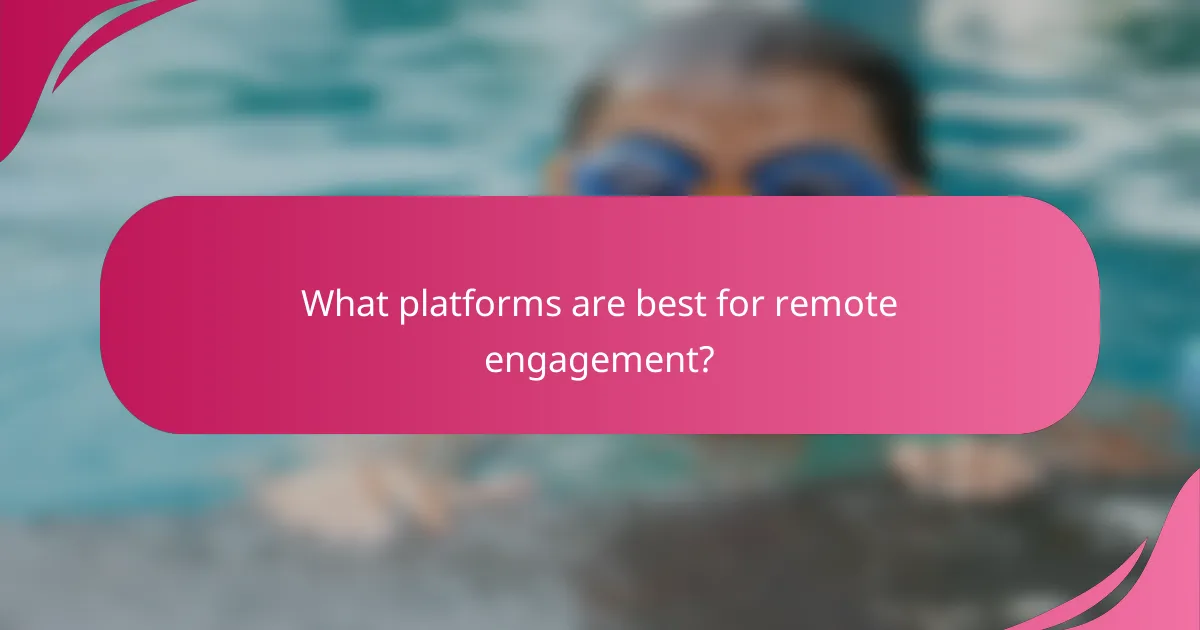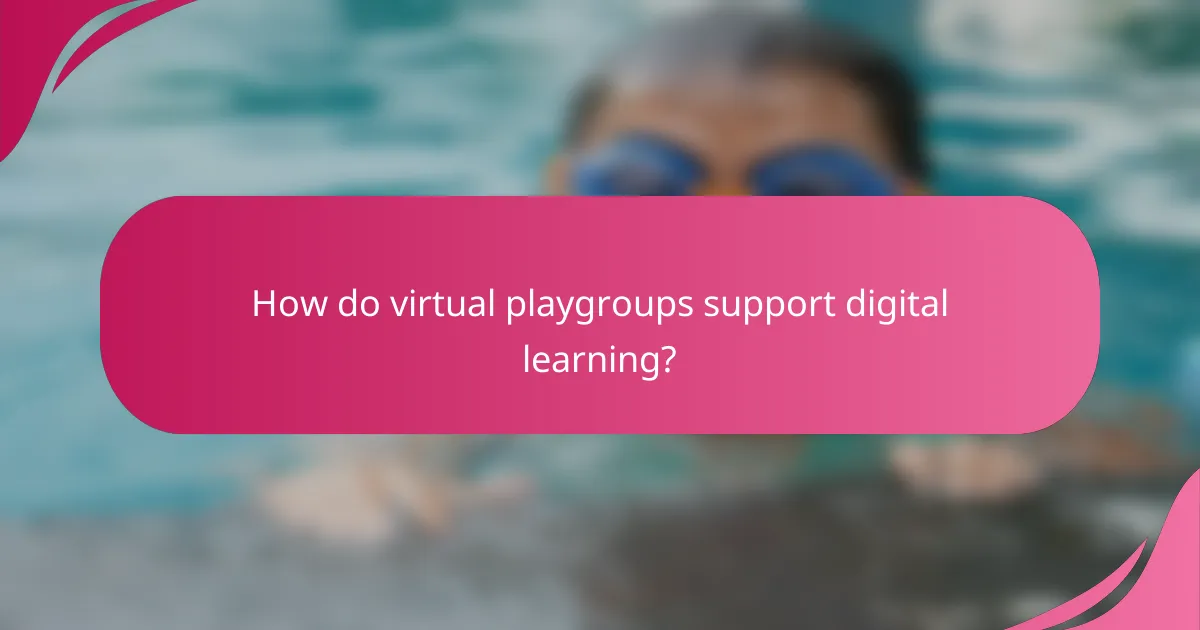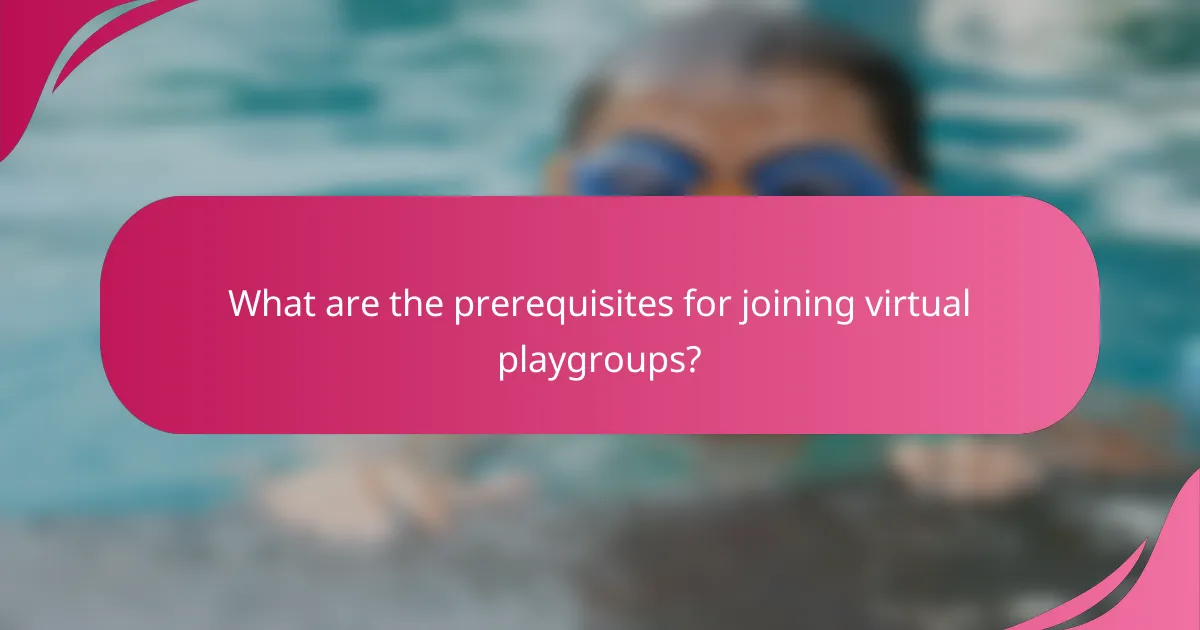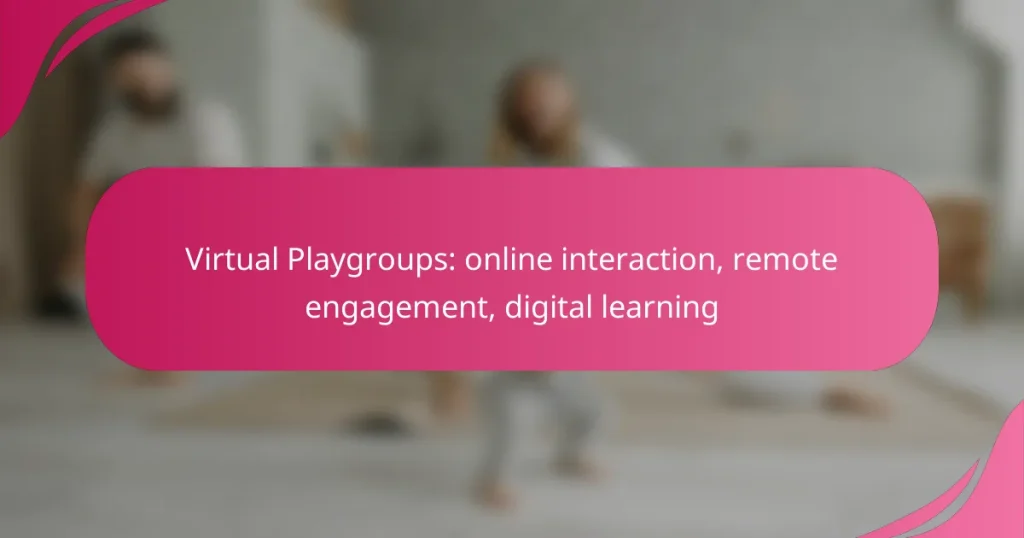Virtual playgroups create dynamic online environments that enhance interaction and engagement among participants. By utilizing various interactive features, these digital spaces not only promote socialization but also support collaborative learning experiences tailored to diverse needs.

How can virtual playgroups enhance online interaction?
Virtual playgroups significantly enhance online interaction by providing a structured environment where participants can connect, communicate, and collaborate. These digital spaces foster engagement through various interactive features, making them ideal for socialization and learning.
Increased socialization opportunities
Virtual playgroups create numerous socialization opportunities by bringing together individuals from diverse backgrounds. Participants can engage in discussions, share experiences, and build friendships, all from the comfort of their homes.
To maximize social interaction, consider scheduling regular meet-ups and themed activities. This approach encourages consistent participation and helps members feel more connected to one another.
Facilitated peer learning
Peer learning is a key benefit of virtual playgroups, as members can share knowledge and skills in an interactive setting. This collaborative learning approach allows participants to learn from each other’s experiences and insights, enhancing their understanding of various topics.
Incorporating group projects or discussion forums can further facilitate peer learning. For instance, members can work together on a common goal, such as creating a presentation or solving a problem, which reinforces their learning through collaboration.
Engagement through gamification
Gamification in virtual playgroups boosts engagement by incorporating game-like elements into activities. Features such as points, badges, and leaderboards motivate participants to actively participate and complete tasks.
To effectively use gamification, consider implementing challenges or competitions that encourage friendly rivalry. For example, you might host a trivia night where participants earn points for correct answers, making learning fun and interactive.

What platforms are best for remote engagement?
Several platforms excel in facilitating remote engagement, each offering unique features tailored for different needs. The best choice depends on the specific goals of your virtual playgroup, whether that’s live interaction, collaborative activities, or community building.
Zoom for live sessions
Zoom is a popular choice for live sessions due to its user-friendly interface and robust features. It supports video conferencing for large groups, breakout rooms for smaller discussions, and screen sharing for interactive presentations.
When using Zoom, consider scheduling sessions during peak hours for maximum participation. Ensure participants have the app installed and test audio and video settings beforehand to avoid technical issues.
Google Meet for group activities
Google Meet is ideal for group activities, especially for those already using Google Workspace. It allows for easy integration with Google Calendar and other tools, making it simple to schedule and join meetings.
Utilize features like screen sharing and collaborative documents to enhance engagement. Keep sessions concise, ideally under an hour, to maintain focus and energy among participants.
Facebook Groups for community building
Facebook Groups serve as a platform for ongoing community engagement, allowing members to share resources, post updates, and interact asynchronously. This is particularly useful for building relationships over time.
Encourage active participation by regularly posting discussion prompts and resources. Monitor group activity to foster a positive environment and address any issues promptly, ensuring a supportive community atmosphere.

How do virtual playgroups support digital learning?
Virtual playgroups enhance digital learning by providing interactive environments where children can engage with educational content and peers remotely. These platforms facilitate access to diverse resources, promote collaboration, and offer engaging experiences that foster learning in a digital format.
Access to diverse educational resources
Virtual playgroups grant children access to a wide range of educational materials, including videos, games, and interactive lessons. This variety caters to different learning styles and interests, making it easier for children to find resources that resonate with them.
Many platforms curate content from reputable educational organizations, ensuring that the materials are both engaging and aligned with learning standards. Parents can also supplement these resources with local educational tools, enhancing the overall learning experience.
Interactive learning experiences
Interactive learning experiences in virtual playgroups allow children to participate actively rather than passively absorbing information. Activities such as live quizzes, group projects, and virtual field trips encourage engagement and collaboration among peers.
These experiences can be tailored to different age groups and learning objectives, making them suitable for a variety of educational contexts. For instance, younger children might enjoy storytelling sessions, while older children could engage in science experiments conducted online.
Collaboration with educators
Virtual playgroups often involve collaboration with educators who can guide learning and provide personalized feedback. This interaction helps children stay motivated and accountable in their learning journeys.
Educators can facilitate discussions, answer questions, and adapt activities based on the children’s needs. Parents should look for platforms that offer regular communication with teachers to ensure their child’s progress is monitored effectively.

What are the prerequisites for joining virtual playgroups?
Joining virtual playgroups requires a few essential prerequisites to ensure smooth interaction and engagement. Key factors include a stable internet connection, basic tech literacy, and appropriate devices for accessing the online platform.
Stable internet connection
A stable internet connection is crucial for participating in virtual playgroups. Ideally, a broadband connection with a speed of at least 5 Mbps is recommended for seamless video and audio communication.
Consider using a wired connection instead of Wi-Fi when possible, as it typically offers more reliability. Regularly test your internet speed to ensure it meets the requirements for smooth interaction.
Basic tech literacy
Basic tech literacy is necessary to navigate the online platforms used for virtual playgroups. Participants should be comfortable with using video conferencing tools, chat functions, and any specific applications required for the group.
Familiarize yourself with common features such as screen sharing, muting, and unmuting, as well as how to troubleshoot basic issues. Online tutorials can be helpful for those who need additional guidance.
Appropriate devices
Having the right devices is essential for effective participation in virtual playgroups. A computer, tablet, or smartphone with a camera and microphone is typically required.
Ensure your device’s operating system and software are up to date to avoid compatibility issues. Test your audio and video settings before joining the group to ensure everything is functioning properly.

What criteria should be used to select a virtual playgroup?
Selecting a virtual playgroup involves evaluating several key criteria to ensure a positive and engaging experience for children. Important factors include the suitability of activities for the child’s age, the qualifications of the facilitator, and the overall structure of the program.
Age-appropriate activities
Activities in a virtual playgroup should align with the developmental stages of the children involved. Look for programs that offer a variety of interactive and educational activities tailored to different age groups, typically ranging from toddlers to early school-age children.
Examples of age-appropriate activities include storytelling, simple crafts, and interactive games. Ensure that the activities are not only fun but also promote learning and social skills, catering to the interests and abilities of the children participating.
Facilitator qualifications
The qualifications of the facilitator play a crucial role in the effectiveness of a virtual playgroup. Ideally, facilitators should have experience in early childhood education or child development, as well as training in managing online interactions.
When evaluating facilitators, consider their background, certifications, and any specific training in digital engagement techniques. A good facilitator should be able to create a welcoming environment, encourage participation, and adapt activities to meet the needs of all children involved.


